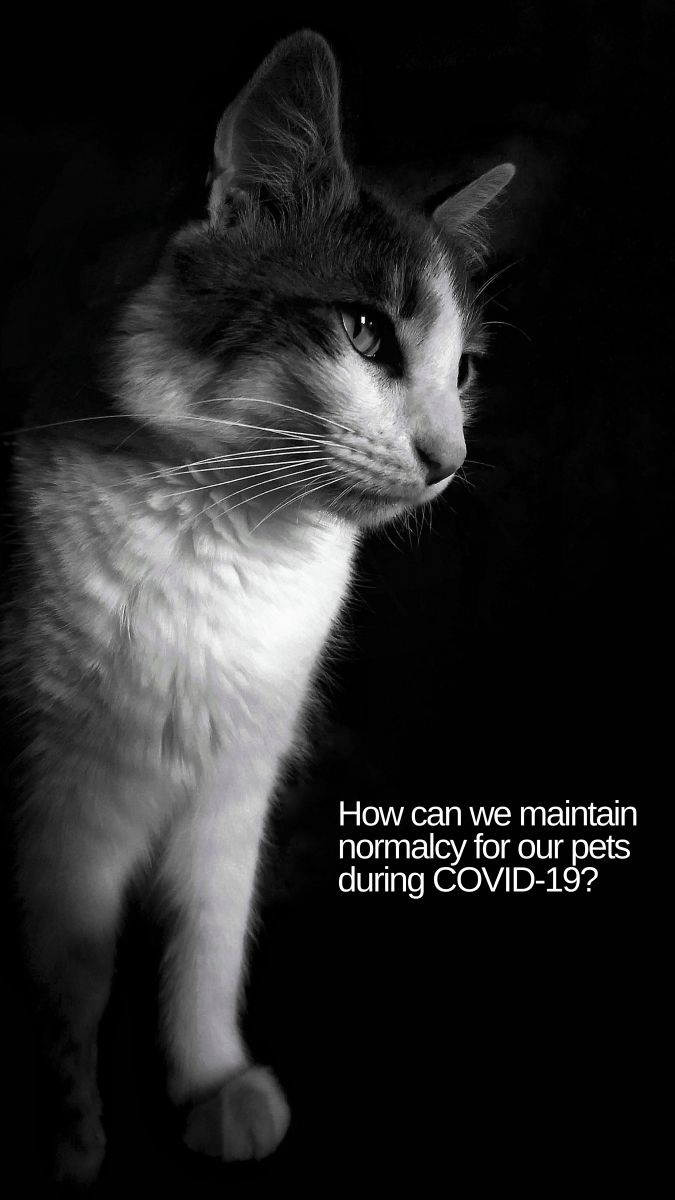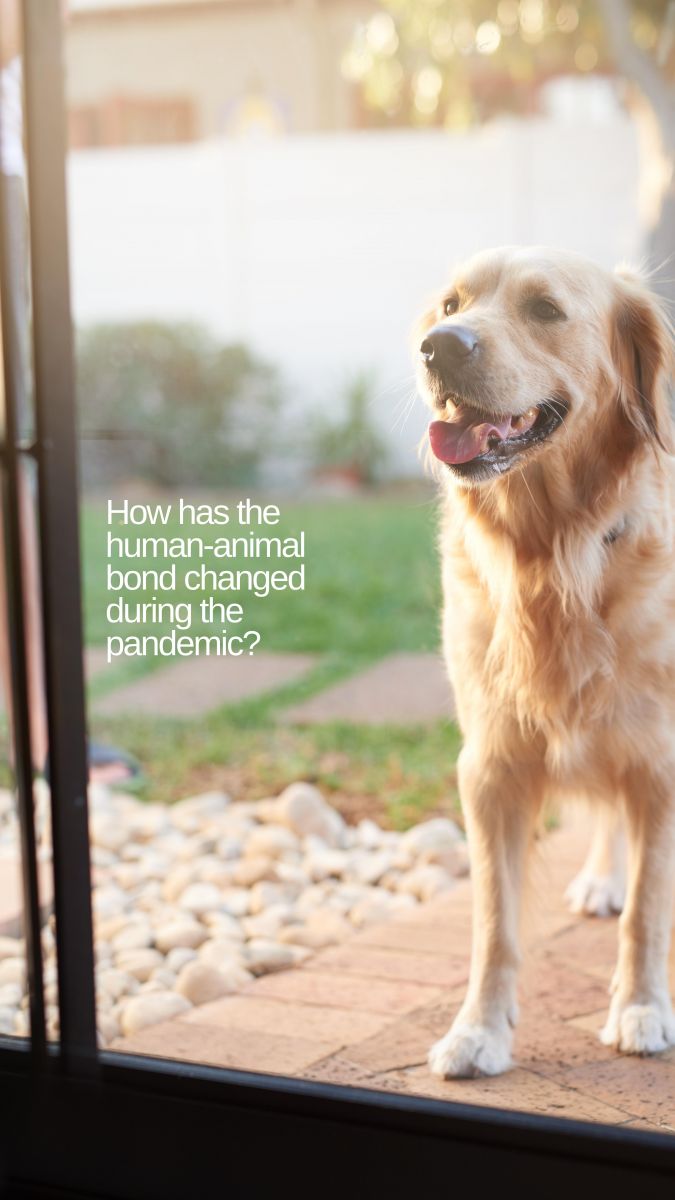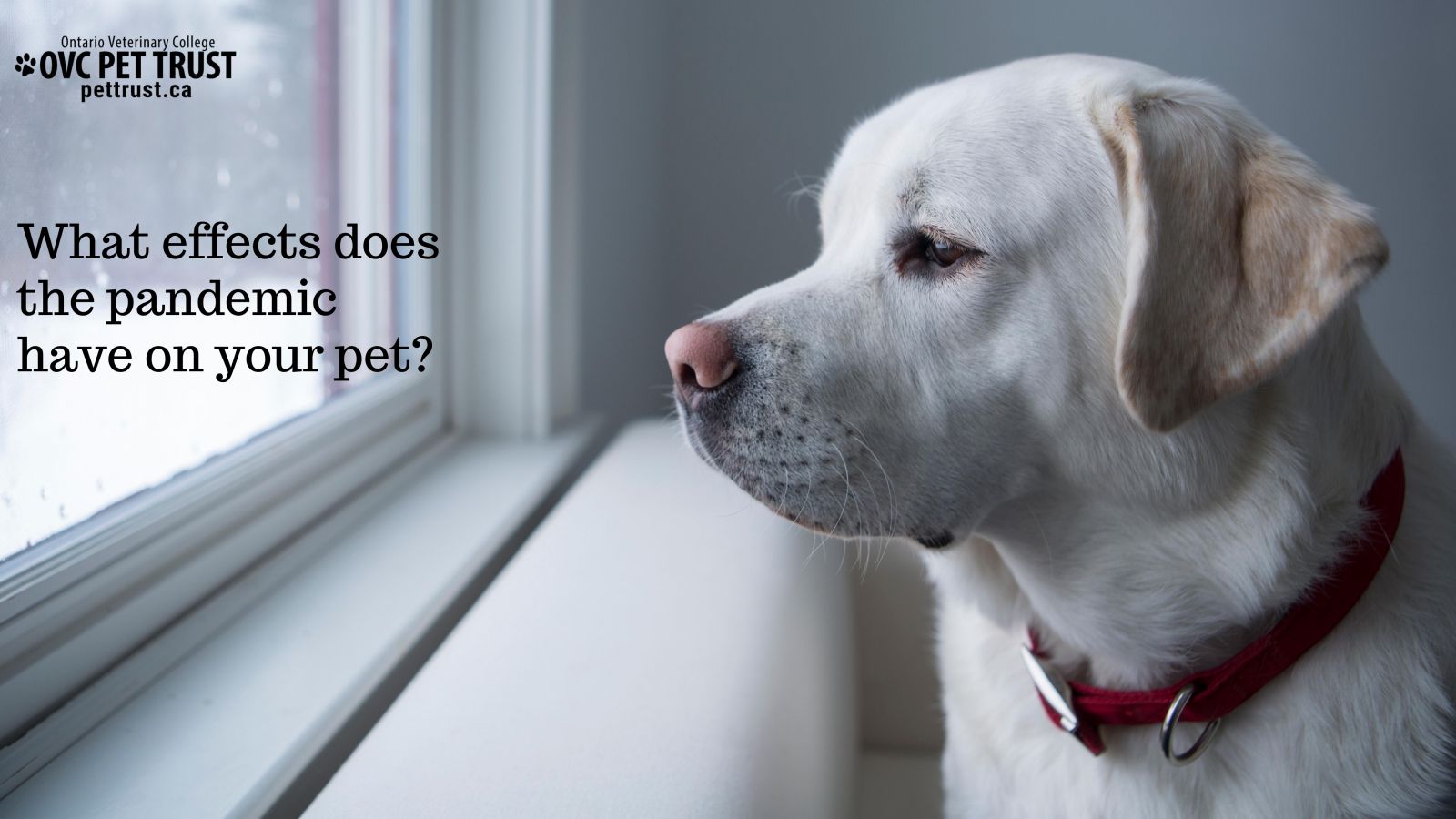Animal Behaviour, Welfare & COVID-19
OVC Expert Q&A with Prof. Lee Niel
It may be redundant to say that the impacts of the COVID-19 pandemic have changed the world as we know it, but what does this mean for our pets? A recent study in the United States revealed that 84 per cent of pet owners have become more conscious of their pet’s health during quarantine; 73 per cent of respondents are worried about leaving their dogs or cats at home when it’s time to return to the office; and 59 per cent fear their pet would suffer from separation anxiety.
We sat down (virtually) with OVC Pet Trust-funded researcher Professor Lee Niel, an animal behaviour and welfare expert at the University of Guelph’s Ontario Veterinary College, to answer the burning questions of pet owners on how this global health emergency may be impacting our companion animals.
 Could changes in my home due to the pandemic affect my pet?
Could changes in my home due to the pandemic affect my pet?
There are many ways COVID-19 may potentially be affecting our companion animals in the areas of behaviour, health and welfare. Many of us are currently working from home. Animals who were once used to having large chunks of the day on their own have potentially lost their normal routines. Anecdotally, some people share that their animals are loving the extra attention and interaction with their humans while in quarantine together, while others have suggested that their animals seem annoyed with the constant presence of humans. Every individual animal is different and may be impacted in many ways – positively or negatively.
How can we maintain normalcy for our pets during COVID-19?
Creating a daily routine is beneficial for people and for animals alike. According to research, predictability and control are two key methods for reducing stress in all species, including humans. Stress research shows humans and animals like predictability. Having a set schedule helps us know what to expect throughout the day. Creating regularity for even the most mundane or micro tasks during times of pandemic can help create the sense of control and predictability we need. The same goes for our pets: this may mean feeding your animals their meals at the same time each day and establishing set times for walks throughout the day to maintain a sense of normalcy.
 How has the human-animal bond changed during the pandemic?
How has the human-animal bond changed during the pandemic?
The human-animal bond is a mutually beneficial relationship between people and animals, and changes in that bond could certainly have occurred during the pandemic due to changes in how people are interacting with their pets. These changes largely depend on the individual animal, their needs and the nature of their relationship with their owner before (pre-COVID-19), compared to now. Many of us are experiencing additional stress during the pandemic and this might impact the ways in which we interact with our pets. In some cases, people might be relying more on animals for companionship; in other cases, people might be withdrawn and giving animals less of their time and attention.
The dog that is happy to have their owner home may be enjoying the extra attention and suffer from separation-related behaviours when their humans’ routine goes back to “normal”. A cat who is nervous around people and would prefer to be left alone may in fact be more content when they can have more alone time. Some people may benefit from having an animal with them during this time, especially those that are home alone. The overall impact is going vary depending on the individual relationship between the animal and their human(s).
What is separation anxiety and how do animals experience it?
Separation-related behaviours (SRBs) occur when the pet experiences distress when separated from their people. Common SRBs that are observed include increased activity and whining, attempts at reunion such as scratching the door, inappropriate toileting and destructive behaviours such as chewing or destroying household items. Many behaviour professionals are concerned that pets are getting used to having their people around and are losing their ability to cope with being alone. It is important to ensure animals in the home still have some alone time during the pandemic to reduce these impacts. This might include allowing the animal to rest in a separate room for periods of time while working from home, or making sure to leave them home alone during some outings so that they remain used to the experience.
.jpg)
If separation-related behaviours do occur, what treatments are recommended?
In normal life, treating SRB can be difficult to manage because our daily life routines have limited flexibility and often require extended time away for work and school. Working from home provides an opportunity to work on SRBs while avoiding triggers such as extended absences from the home. The general approach to treating SRBs is to pair gradual increases in time alone with good distractions that keep the animal busy and happy. For example, a “snuffle mat” filled with treats might be paired with short absences. If the animal responds well to these short absences, the duration can be gradually increased over time. In some cases it can be useful to combine these behaviour modification strategies with medications that reduce anxiety. These are of course general ideas; individuals should always consult their family veterinarian and behaviour professionals to get advice for animals with specific issues or problems.
What about if you have welcomed a new pet into your home during COVID-19?
The sensitive period for socialization occurs quite early on for both puppies and kittens (the first 16 weeks for puppies and the first 9 weeks for kittens), and optimal socialization includes exposure to lots of different types of people, other animals, environments, sounds and smells during this period. If young animals don’t get appropriate exposure to these various types of stimuli early on, they can develop persistent fears later in life. For example, puppies that do not have appropriate exposure to other dogs might be fearful of other dogs as adults. Socialization for your new pet during COVID-19 while respecting physical distancing measures may be challenging.
.jpg)
However, if you have welcomed a new family member into your home during the pandemic, there are many things owners can do to try to replicate these experiences in a safe way. It is currently possible in most areas to go for physically-distanced walks to ensure exposure to various different sounds, smells and situations. While opportunities for direct contact with other dogs and people are limited, even seeing others from a distance is beneficial. During more restrictive times, owners can still bring stimuli into the home environment. For example, owners can play recordings of different animal, human and environmental sounds and bring items with different smells into the home.
When it comes to independence, behaviour professionals are also concerned because young animals may not be learning how to cope with spending time alone. Ensuring your pet has an opportunity to develop independence is extremely important, and there are many ways we can help our pets develop this independence. For example, owners can spend time in a separate part of the house or backyard, or leave the puppy or kitten at home when going out for walks or doing errands.
If pet owners notice a change in their animals’ behaviour, what would you recommend?
Check with your family veterinarian or a qualified behaviour professional to see what would work best for your individual pet’s needs. Most hospitals are now open or offering telemedicine appointments. Behaviour issues lend themselves well to telehealth, because as we know, animals more likely to show their normal behaviour in the home than in the clinic.



